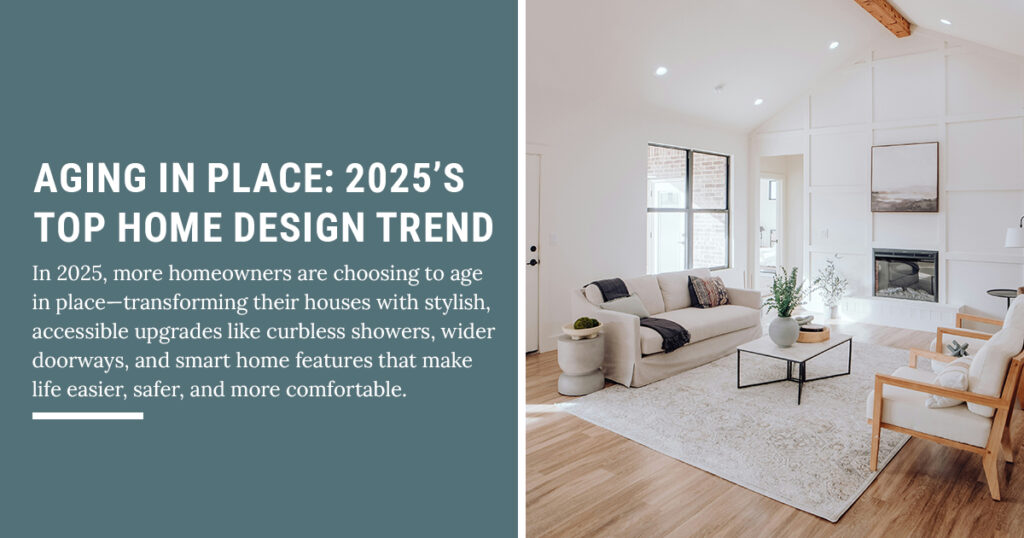
Why “Aging in Place” Is the Biggest Home Design Trend of 2025
In 2025, adaptive living has shifted from niche to mainstream—and for good reason. A growing number of homeowners are investing in home modifications that allow them to stay in the homes they love, safely and comfortably, well into their later years. Think widening doorways, curbless showers, and grab bars that blend into your décor—not into a clinical setting.
Why It’s Trending
Several factors are fueling this momentum. First, many Americans prefer to remain in familiar surroundings as they age rather than relocate. Economic and housing market conditions—higher mortgage rates, low inventory—are making moving tougher, while improvements such as raised toilets and open floor plans help homes grow with their owners. Accessibility features aren’t just practical; they’re investments in dignity, independence, and long-term comfort.
Accessibility That Doesn’t Look Institutional
Beyond functionality, 2025 has brought a shift toward accessibility features that look stylish rather than clinical. Designers are embracing smoother transitions, refined grab bars, and wide hallways framed as architectural design. It’s not just about safety—it’s about blending inclusive design into everyday aesthetics.
How Accessibility Home Improvements Brings This to Life
Whether you’re aging in place or designing a future-ready home, our services make it seamless. We specialize in: – Step-free entries and widened doors – Curbless showers, raised toilets, and grab bar installs – Smart home integrations like voice-controlled lighting and automated doors – Barrier-free remodeling that looks intentional and stylish
We ensure safety, independence, and beauty—all in one. Let’s reimagine what accessibility can look like.
Accessibility isn’t an afterthought. It’s an essential feature of thoughtful, lifelong design. Learn more: Accessibility Home Improvements.
 Leave us a Google Review Here
Leave us a Google Review Here